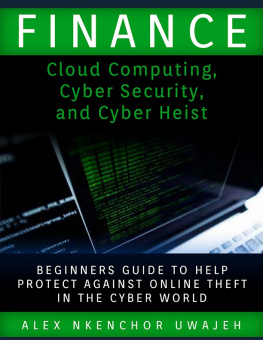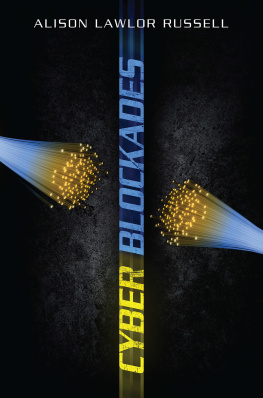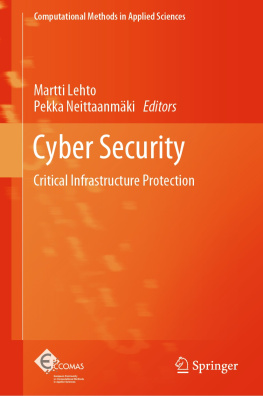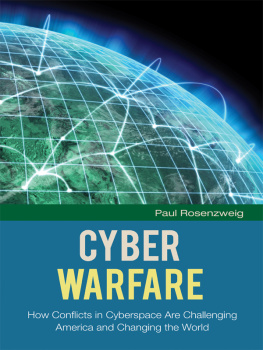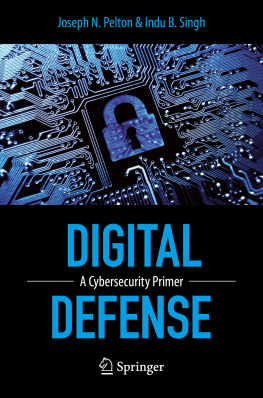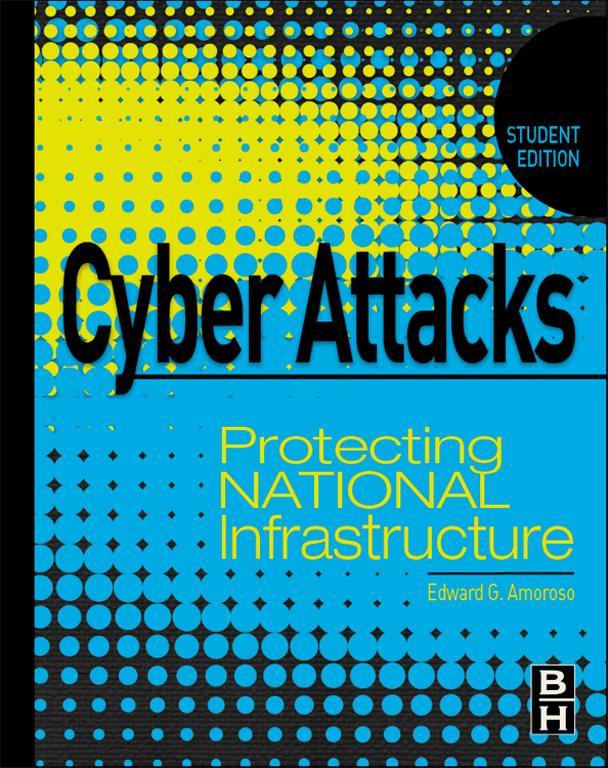Cyber Attacks
Protecting National Infrastructure
Student Edition
Edward G. Amoroso

Acquiring Editor: Pam Chester
Development Editor: David Bevans
Project Manager: Paul Gottehrer
Designer: Alisa Andreola
Butterworth-Heinemann is an imprint of Elsevier
225 Wyman Street, Waltham, MA 02451, USA
Copyright 2013 Elsevier Inc. All rights reserved
No part of this publication may be reproduced or transmitted in any form or by any means, electronic or mechanical, including photocopying, recording, or any information storage and retrieval system, without permission in writing from the publisher. Details on how to seek permission, further information about the Publishers permissions policies and our arrangements with organizations such as the Copyright Clearance Center and the Copyright Licensing Agency, can be found at our website: www.elsevier.com/permissions.
This book and the individual contributions contained in it are protected under copyright by the Publisher (other than as may be noted herein).
Notices
Knowledge and best practice in this field are constantly changing. As new research and experience broaden our understanding, changes in research methods or professional practices, may become necessary.
Practitioners and researchers must always rely on their own experience and knowledge in evaluating and using any information or methods described herein. In using such information or methods they should be mindful of their own safety and the safety of others, including parties for whom they have a professional responsibility.
To the fullest extent of the law, neither the Publisher nor the authors, contributors, or editors, assume any liability for any injury and/or damage to persons or property as a matter of products liability, negligence or otherwise, or from any use or operation of any methods, products, instructions, or ideas contained in the material herein.
Library of Congress Cataloging-in-Publication Data
Amoroso, Edward G.
Cyber attacks : protecting national infrastructure / Edward Amoroso, John R. Vacca.Student ed.
p. cm.
Summary: Ten basic principles that will reduce the risk of cyber attack to national infrastructure in a substantive mannerProvided by publisher.
ISBN 978-0-12-391855-0 (hardback)
1. CyberterrorismUnited StatesPrevention. 2. Computer networksSecurity measures. 3. CyberspaceSecurity measures. 4. Computer crimesUnited StatesPrevention. 5. National securityUnited States. I. Vacca, John R. II. Title.
HV6773.2.A47 2012
363.32590046780973dc22
2012000035
British Library Cataloguing-in-Publication Data
A catalogue record for this book is available from the British Library
ISBN: 978-0-12-391855-0
Printed in the United States of America
12 13 14 15 16 10 9 8 7 6 5 4 3 2 1

For information on all BH publications visit our website at www.elsevierdirect.com/security
Preface
Man did not enter into society to become worse than he was before, nor to have fewer rights than he had before, but to have those rights better secured.
Thomas Paine in Common Sense
Before you invest any of your time with this book, please take a moment and look over the following points. They outline my basic philosophy of national infrastructure security. I think that your reaction to these points will give you a pretty good idea of what your reaction will be to the book.
1. Citizens of free nations cannot hope to express or enjoy their freedoms if basic security protections are not provided. Security does not suppress freedomit makes freedom possible.
2. In virtually every modern nation, computers and networks power critical infrastructure elements. As a result, cyber attackers can use computers and networks to damage or ruin the infrastructures that citizens rely on.
3. Security protections, such as those in security books, were designed for small-scale environments such as enterprise computing environments. These protections do not extrapolate to the protection of massively complex infrastructure.
4. Effective national cyber protections will be driven largely by cooperation and coordination between commercial, industrial, and government organizations. Thus, organizational management issues will be as important to national defense as technical issues.
5. Security is a process of risk reduction, not risk removal. Therefore, concrete steps can and should be taken to reduce, but not remove, the risk of cyber attack to national infrastructure.
6. The current risk of catastrophic cyber attack to national infrastructure must be viewed as extremely high, by any realistic measure. Taking little or no action to reduce this risk would be a foolish national decision.
The chapters of this book are organized around 10 basic principles that will reduce the risk of cyber attack to national infrastructure in a substantive manner. They are driven by experiences gained managing the security of one of the largest, most complex infrastructures in the world, by years of learning from various commercial and government organizations, and by years of interaction with students and academic researchers in the security field. They are also driven by personal experiences dealing with a wide range of successful and unsuccessful cyber attacks, including ones directed at infrastructure of considerable value. The implementation of the 10 principles in this book will require national resolve and changes to the way computing and networking elements are designed, built, and operated in the context of national infrastructure. My hope is that the suggestions offered in these pages will make this process easier.
Student Edition
To make it easier to teach these basic principles in the classroom, Cyber Attacks Student Edition adds new material developed by John R. Vacca, Editor-in-Chief of Computer and Information Security Handbook (Morgan Kaufmann Publishers) aimed specifically at enhancing the student experience, making it appropriate as a core textbook for instructors teaching courses in cyber security, information security, digital security, national security, intelligence studies, technology and infrastructure protection and similar courses.
Cyber Attacks Student Edition features the addition of case studies to illustrate actual implementation scenarios discussed in the text. The Student Edition also adds a host of new pedagogical elements to enhance learning, including chapter outlines, chapter summaries, learning checklists, chapter-by-chapter study questions, and more.
Instructor Support for Cyber Attacks Student Edition includes Test Bank, Lecture Slides, Lesson Plans, and Solutions Manual available online at http://textbooks.elsevier.com/web/Manuals.aspx?isbn=9780123918550.
Test BankCompose, customize, and deliver exams using an online assessment package in a free Windows-based authoring tool that makes it easy to build tests using the unique multiple choice and true or false questions created for



